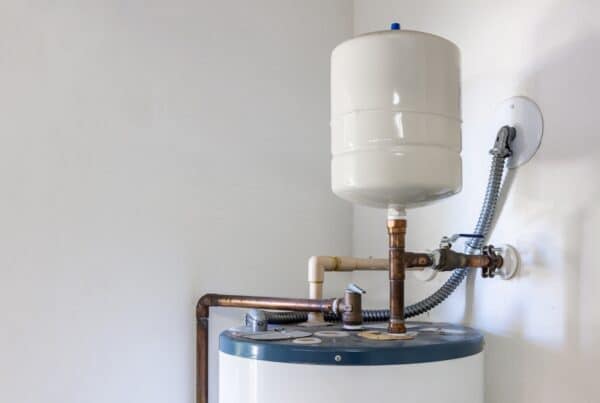
PEX has become a popular piping option in modern plumbing systems. However, roadblocks like a stubborn PEX clamp during plumbing projects can quickly turn an ordinary day into a big headache. Don’t panic yet! With the right tools and techniques, anyone can learn how to safely remove PEX clamps.
In this post, we’ll walk through everything you need to know to detach those pesky clamps without damaging your plumbing. You’ll see how to identify clamp types, which tools work best, simple preparation for a smooth process, and step-by-step directions.
Essential Tools for PEX Clamp Removal
When it comes to removing those stubborn PEX clamps, having the right tools makes all the difference. While regular pliers may seem tempting, you’ll save yourself frustration and avoid damage by using specialized PEX removal tools.
Here are the essential items every homeowner should have on hand:
- PEX Tubing Cutter – This nifty tool has a sharp blade that slices through plastic piping without leaving ragged edges. Models like the Milwaukee PEX cutter have a swiveling head to easily access tight spaces.
- PEX Clamp Pliers – These grip and twist off clamp rings with minimal effort. Cushioned handles provide a comfortable, secure grip.
- Hacksaw – A small hacksaw lets you saw through seized metal clamps when other methods fail. Choose one with extra blade tension for smooth cuts.
- Screwdrivers – Standard flat head and Phillips head screwdrivers give the leverage needed to pry off clamp bands.
- Flashlight – Seeing the clamp and plumbing is crucial. An LED flashlight or headlamp keeps both hands free.
- Safety Gear – Protect yourself with goggles, work gloves, and closed-toe shoes.
Investing in the right high-quality tools makes removing PEX clamps quicker and prevents damage. Inspect tools before each use and replace worn parts promptly.

PEX Clamp Removal Prep Steps
Removing PEX clamps is straightforward, as long as you take a few important preparatory steps first. Rushing into clamp removal can lead to water damage or injury if you’re not set up properly. Follow this pre-removal checklist to ensure safety and success when getting ready to detach those tricky clamps:
- Shut Off Water – Firstly, locate the main shut-off valve and turn it clockwise to stop the water flow. This critical first step prevents leaks when you remove clamps.
- Relieve Pressure – Open nearby faucets to drain built-up pressure from the plumbing lines. This makes clamps less stubborn to detach.
- Identify Clamp Type – Inspect if the clamp is metal or plastic. This determines the proper removal technique to use.
- Gather Tools – Have your PEX cutters, pliers, hacksaw, screwdrivers, flashlight, and safety gear nearby. Inspect everything to ensure it’s in good shape first.
- Use Safety Gear – Equally important, protect yourself with closed-toe shoes, work gloves, and safety goggles. Work slowly and carefully.
- Photograph Layout – Take pictures of the plumbing setup before disassembly. They will help with proper reinstallation later.
Accessing and Removing the PEX Clamps
Once your prep work is complete, it’s time to get those clamps detached. Follow these tips to safely access and remove different types of PEX clamps:
Accessing the Clamp
- Clear any insulation or tubing shrouds to expose the clamp. Be gentle to avoid tearing.
- For clamps in tight spaces, use a compact tubing cutter and angled screwdriver to reach them.
- Adjust lighting as needed. A headlamp allows you to get both hands on the clamp.
Twist and Pull Removal
- This method works for plastic PEX clamps. Grip with pliers and twist counterclockwise to loosen.
- Once loose, wiggle the clamp sideways to detach it. Take care not to bend or kink tubing.
- Pull the clamp off the tubing and fitting. Slide it over the end if needed.
Cutting Removal
- Use a hacksaw to cut metal band clamps off. Position the blade against the clamp band or ring.
- Saw carefully through the full width of the band. Caution – saws can damage tubing.
- Spread the cut clamp open and remove it from the tubing. File any burrs until they’re smooth.
Safety Notes
- Work slowly and cautiously, especially when using saws and cutters near pipes.
- Take breaks to avoid hand fatigue and slips. Hydrate and stay alert.
- Lastly, if a task feels unsafe, contact a professional for assistance. Don’t take risks.
Tips for Other PEX Clamp Varieties
While the twist, pull, and cut techniques work for most clamps, you may encounter other varieties that require special handling. Here are some tips for removing less common PEX clamps:
- Pinch Clamps – These metal clamps have tabs that you loosen with a flathead screwdriver. Take care not to bend or puncture the tubing when removing.
- Loop Clamps – Compress the loop with pliers to bring the ends together for removal. Protect tubing from scratching.
- Stainless Steel Clamps – Use a hacksaw or rotary tool to cut through stainless steel. Lubricate blades first for smoother cutting.
- Quick-Grip Clamps – Squeeze the tabs and wiggle side-to-side to detach these plastic clamps. Don’t bend the tabs too far.
- Push-Fit Clamps – Carefully pry up the circular clamp edge using a small flathead screwdriver. Remove by hand once lifted.
- Cinch Clamps – Twist these nylon clamps apart at the seam using pliers. Take it slow to avoid snapping.
- Crimp Ring Clamps – Must be cut off with a tubing cutter. Have replacement rings ready to re-crimp later.

When to Call a Professional
When it comes down to it, don’t be afraid to ask for help if you encounter super-tight clamps in awkward, cramped spaces that are tough to reach. Professionals have the right tools to access those hard-to-get areas without damaging your pipes.
Similarly, if you run into PEX clamps that are severely corroded or unlike any you’ve seen before, it’s best to let a pro remove them. Attempting to force off old, corroded parts can lead to breaks and leaks. And if you aren’t sure exactly what type of clamp you’re dealing with, it’s difficult to pick the proper removal technique, increasing your chances of making errors.
Of course, if you try all the standard DIY methods but that stubborn clamp still refuses to budge, avoid using excessive force or improvising risky alternatives. A professional plumber can strategize the safest options for your unique situation.
Lastly, if there are already signs of water damage around the fittings like leaks, mold, or rot, this indicates underlying issues beyond just clamp replacement that are best assessed by an expert. Calling a pro at the first sign of trouble can prevent injury, and extensive property damage, and save you big hassles down the road.
Other Recommended Maintenance
With the tools already in hand for PEX clamp removal, it makes sense to perform some additional preventative maintenance inspections. For instance, take the opportunity to carefully examine all visible piping, fittings, connections, and valves for signs of leakage, corrosion, wear, or damage.
Addressing minor issues now can help avoid major headaches down the road. For example, wipe down areas that may have gotten damp from small leaks and look for any mold or rot starting to develop. Catching it early keeps decay from spreading.
Also, check places pipes pass through walls for gaps that allow airflow and lead to freezing. Seal any openings with insulation. Ensure all water supply fixtures work properly, replacing worn washers, aerators, or gaskets as needed. A few strategic maintenance steps like these while already deep into a plumbing project can add years of life to your pipes.
Conclusion
Learning to remove PEX clamps may seem intimidating, but with the proper tools and techniques, it’s a manageable task. The key is taking time to identify clamp types, equip yourself with specialized removal tools, and follow safety best practices. Patience and care are essential, but the reward is long-lasting, leak-free plumbing you can take pride in.
When plumbing concerns or other home components call for an expert pair of eyes, don’t wait to schedule services with Alpha Building Inspections in NH, MA, and ME.



